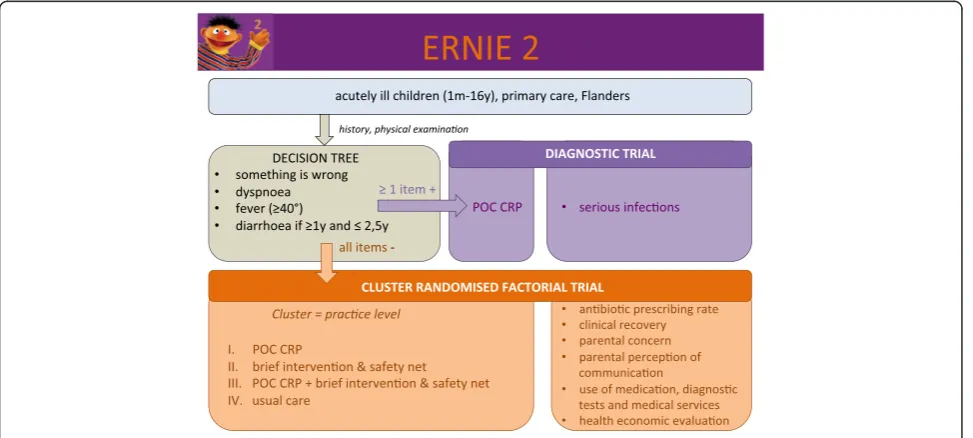Diagnosing serious infections in acutely ill children in ambulatory care (ERNIE 2 study protocol, part A): diagnostic accuracy of a clinical decision tree and added value of a point-of-care C-reactive protein test and oxygen saturation
Full text
Figure

Related documents
further financial barrier to health care. Also, although CHPS service package is mainly prevention, promotion, and treatment of minor ailment, the initiative lacks needed
Although all FDRs received a letter about their increased risk for CRC and need for colonoscopy, the majority were in the Precontemplation Stage of Change and discussed no intention
Threshold PAKE: The first PKI-based threshold PAKE protocol was given by Ford and Kaliski [15], where n servers, sharing the password of the client, support to
WHAT THIS STUDY ADDS: These clinical prediction rules accurately identify patients at low risk for Lyme meningitis in our large multicenter cohort.. Children at low risk may
ANOVA: Analysis of variance; b.i.d.: Twice a day (bis in die); BMI: Body mass index; cAMP: Adenosine monophosphate; cGMP: Cyclic guanosine monophosphate; Cmax: Maximum
In conclusion, the results of this study indicate that clinical symptoms such as pain level (VAS), headaches, shoulder referral and hand radiculopathy or numbness do not cor-
AF: Autofluorescence; AGEs: Advanced glycation endoproducts; BNP: Brain natriuretic peptide; BP: Blood pressure; CAVI: Cardio-ankle vascular index; CCB: Calcium channel blocker;